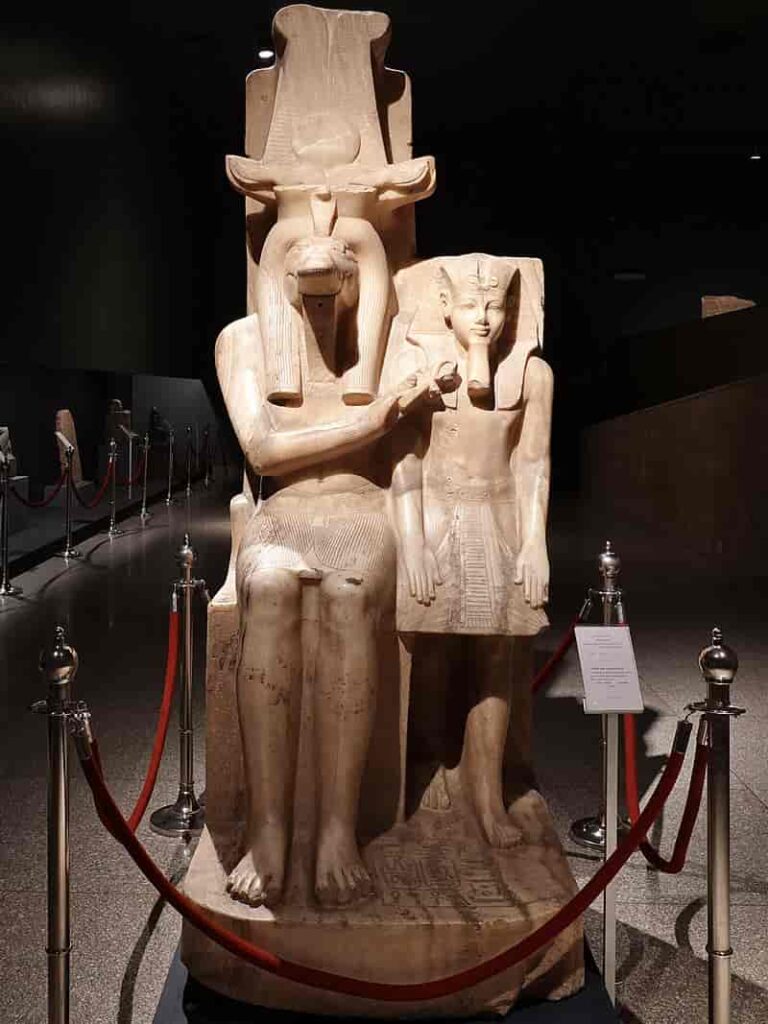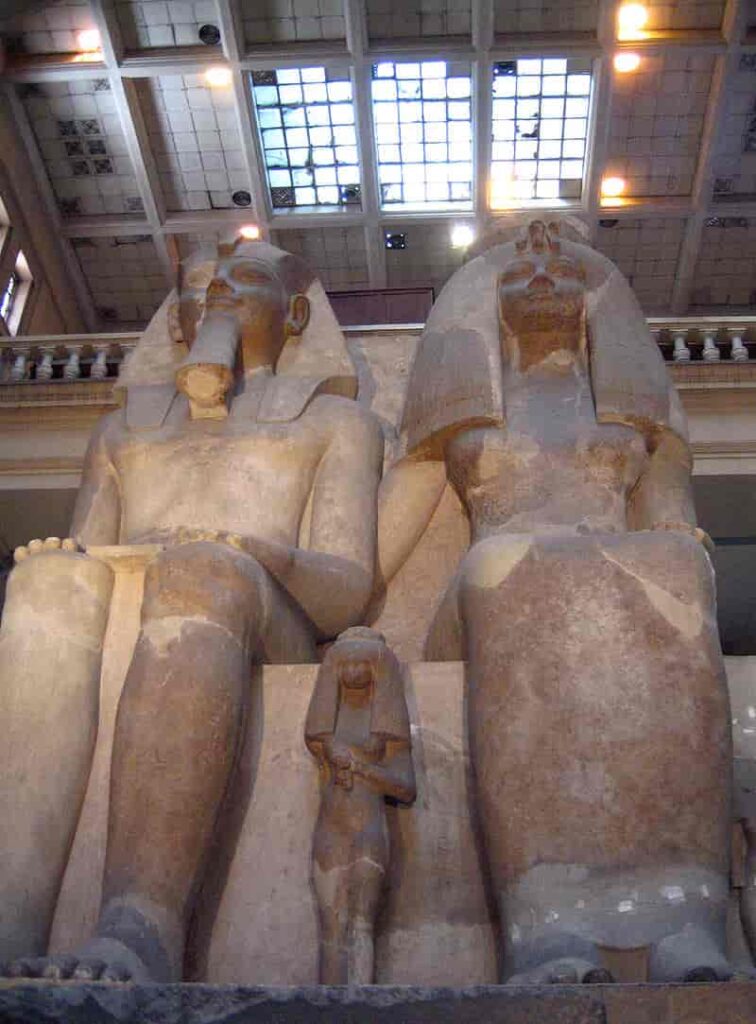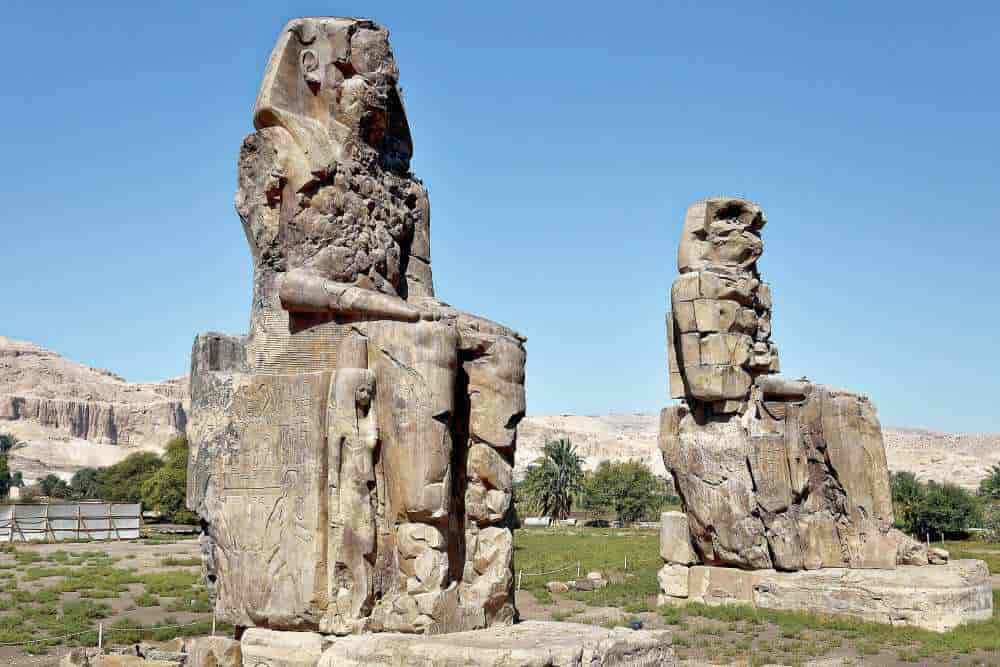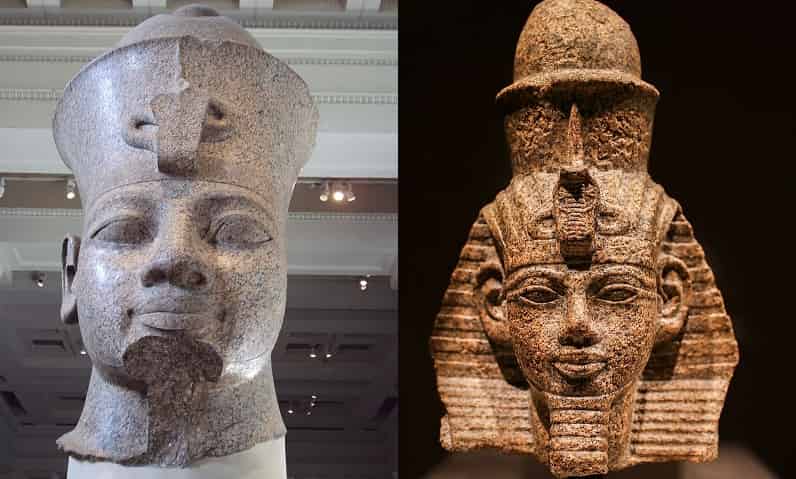Amenhotep III did not hesitate to proclaim his power through the propaganda weapons at his disposal, but he renounced the usual warrior image of the pharaohs to sow the Middle East with peace treaties.
During the 38-year reign of Amenhotep III, ancient Egypt experienced one of its most flourishing times. Under the ninth pharaoh of the 18th dynasty, the country experienced a period of peace and prosperity that resulted in unprecedented artistic and intellectual vitality.
The international political map rested on a delicate balance of powers that tacitly recognized Egypt’s leadership.
The prestige of the pharaoh was as great as the monuments he ordered to be built. His religious behavior laid the foundations for the reform of Amarna that would lead his son and successor, Akhenaten, announcing the primacy of the solar god Aten.
Amenhotep III inherited an empire forged generations before. After a brief period of foreign occupation, Ahmose, founder of the dynasty, drove the Asian invaders from the North. With him began the so-called New Kingdom, which was distinguished by an intense expansionist policy.
The victories, placed under the protection of the god Amun, pushed the borders to their maximum extent. A sphere of influence was created in the Syrian-Palestinian area and a struggle was inaugurated with the nascent great states of the Middle East, including its main rival, the kingdom of Mitanni.
The family of Amenhotep III, inaugurated by Thutmose I, had powerful figures, such as Hatshepsut and Thutmose III. This lineage will only be broken with the death without heir of Tutankhamun.

Amenhotep III : From prince to king
Eldest son of Thutmose IV, Amenhotep was given the birth name of his grandfather, Amenhotep II. Its meaning, “Amun is satisfied”, paid homage to the tutelary god of the monarchy.
Amenhotep was not the son of any of the main wives, but of a secondary named Mutemwiya, whose origin we do not know.
When Amenhotep is king and claims his divine origin, he will have his birth represented on the walls of the Temple of Luxor. The god Amun-Ra, in the form of Thutmose IV, entered the palace to meet the queen to conceive the heir.
We know that he was raised in the northern capital, Memphis. His education was destined to be king. For this reason, when Thutmose IV died after barely ten years of government, the transfer of powers occurred without problems.
His first official act was directing his father’s burial ceremonies in the Valley of the Kings.
Because of his age, no more than 12 years old, government affairs fell into the hands of a regent. It is his mother, Mutemwiya, now promoted to the rank of Great Royal Wife, who exercises this function.
The first eleven years of the reign of Amenhotep III laid the foundations of what would be his rule. The image is that of the hero and sports king.
His first actions were intended to impose his authority. On the other hand, the first conserved record of his reign refers to the opening of quarries, thus initiating his obligations as a builder king and anticipating his future projects.
With the borders calm, military activity was almost irrelevant. He is only seen intervening in year five of his reign to subdue the rebellious tribes of Nubia.
Amenhotep III paid particular attention to this region: it was the main source of gold supply.
The main support for the pharaoh’s policy was found in the heads of the administration and the priesthood, occupied by people from the Delta, to the detriment of the powerful Theban priesthood, which had so dominated politics and religion in ancient Egypt.
Amenhotep III chose from one of these influential families, his main wife, Tiye.
He has been married to her since the second year. Tiye had a political and religious presence never before achieved. She was represented together with her husband, and she herself will be the object of deification.
The couple had six children. The eldest, Thutmose, was the heir. From very early on he held high positions linked to gods of the Delta.
The next descendants of the couple were daughters, which favored an unusual presence of the princesses: Sitamun, Henuttaneb, Nebetah and Iset.
At the end of the reign, Sitamun and Iset were elevated to the rank of Great Royal Wife. Apparently, with the unexpected death of Thutmose, Sitamun acquired an extraordinary importance, being represented with the typical skirt of the princes.
The succession was finally resolved with the birth of a last and belated son, Amenhotep, around the 27 or 30 years of the reign.
Amenhotep III will continue with the policy of diplomatic alliances initiated by his father: peace treaties sealed with marriages. Links with foreign princesses (from Mitani, Babylon, Arzawa), since ancient Egypt never agreed to send their daughters.
Little is recorded about the intermediate years of the reign, between 20 and 30. However, the last period appears to us as a time of changes and projects.
After a rule of three decades, the power of every pharaoh entered a phase in which it suffered from attrition. It was time to regenerate his powers and reaffirm his divine nature in a thousand-year-old ceremony called the Sed Festival. This jubilee was then to be repeated every four years.
The setting chosen by Amenhotep III will be Thebes, now his main residence.
In the year 30 the king celebrated his first jubilee, and built a huge complex on the western bank that was called “House of Joy”, known by the current name of Malkata.
It covered an esplanade of which today you can hardly see the remains of adobe walls and column bases.
Faced with the austerity that characterized the Sed festivals of his predecessors, Amenhotep III celebrated it as a lavish party. The festival was a great event that brought together the highest officials of the court, as well as foreign envoys.
The rejuvenation of the Sed Festival passed through a lifetime identification of the king with the sun god Ra.
The consequence was an iconography with a solar symbolism, and more specifically with its manifestation as a solar disk Aten.
Amenhotep III did not join the sun, but the king himself took its place. From that moment on he will be called “the shining solar disk.” The pharaoh also adopted an image that exaggeratedly accentuated his youthful features.
It was the first time that a pharaoh honored his own deified figure in life. Queen Tiye and her female offspring played a decisive role in this deification process. North of the Malkata precinct at Kom el-Hettan, Amenhotep III erected a funerary temple for his own worship.
The king had the largest building ever built in Egypt designed so far. He commissioned the quartzite to be extracted and transported from northern Egypt to build the pairs of gigantic statues that would flank the three entrances to the enclosure.
The two colossi called Memnon, which guarded the first entrance, are all that remains of that temple.
The lack of major military campaigns was compensated for by a great deal of propaganda activity. His name, along with that of Tiye, appeared throughout the eastern Mediterranean basin and the Middle East on all kinds of objects.
Architecture was used by Amenhotep III as the best expression of his power and colossalism became his distinctive mark.
The twilight of a reign
The next two Sed Festivals, held in the years 34 and 37, attempted to counteract the deterioration of the pharaoh’s health.
His mummy is in agony made worse by an infection in his teeth. During the last five years the representations show him visibly weakened.
The last year recorded in the documentation is 38. Shortly after, the pharaoh died. The heir Amenhotep (later Akhenaten) is the one who directs his father’s funeral in the Valley of the Kings.
Years later, the pharaoh’s mummy was transported inside the tomb of his grandfather, Amenhotep II. The priests of Amun of the Twenty-first Dynasty had turned it into a hiding place to keep the royal mummies as a result of the constant looting of the Valley.
Discovered in 1898, alongside the mummy of Amenhotep III were those of other pharaohs, including that of his father, Thutmose IV.
Amenhotep IV (Akhenaten) inherited a convulsed political map. At the end of the reign of Amenhotep III, the rise of power of the Hittite kingdom destabilized the Middle East.
The allies of ancient Egypt demanded the help of the new king, appealing to the mediation of the queen mother. However, ancient Egypt was experiencing its own internal turmoil.
In year five of his reign, Amenhotep IV moved the capital to Amarna, a city created to be the scene of his religious revolution. His name change to Akhenaten, “Nice to Aten”, meant the exile of Amun.
Thebes lost its primacy. Malkata was abandoned and the Temple of Kom el-Hettan destroyed. The place soon fell into oblivion, and the two colossi of Amenhotep III entered legend.








